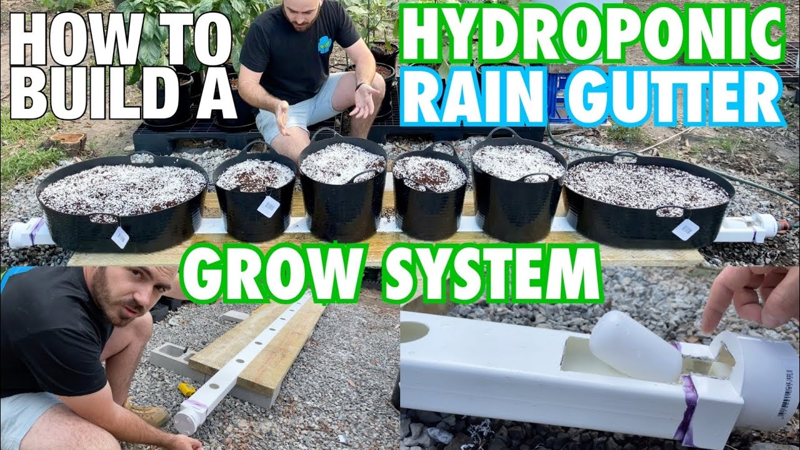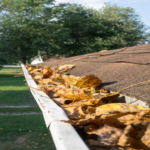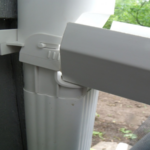- Choose the rain gutter guards that will work best for your home. There are many different types and styles of rain gutter guards available on the market, so it is important to do your research to find the best option for your home.
- Once you have selected the rain gutter guards that you want to install, it is time to get started. Begin by cleaning out your gutters and downspouts to remove any dirt, debris, or leaves.
- Next, measure the length of your gutters and downspouts to ensure that you have the correct size rain gutter guards.
- Once you have the correct size rain gutter guards, it is time to install them. Begin by attaching the guards to the front of the gutter using screws or nails.
- Work your way down the length of the gutter, attaching the rain gutter guards as you go.
- When you reach the end of the gutter, trim the rain gutter guards to fit.
- Finally, test the rain gutter guards to make sure they are properly installed and functioning.
What is the proper way to install gutter guards?
There are a few different ways that you can install gutter guards, but the most important thing is to make sure that they are installed properly so that they can do their job. The first step is to clean out your gutters so that there is no debris in them that could clog up the guards. Once your gutters are clean, you can measure the length and width so that you can cut the guards to size. The next step is to install the brackets that will hold the guards in place. Once the brackets are in place, you can slide the guards into the gutters and make sure that they are secure.
Can I install gutter guards myself?
Most homeowners can install gutter guards themselves in a few hours with little or no assistance. All you need is a ladder, a few common tools and the ability to follow instructions. Many homeowners choose to install gutter guards to protect their gutters from leaves and debris.
What is the easiest gutter guard to install?
There are many types of gutter guards available on the market, and the “easiest” gutter guard to install depends on a number of factors. The first factor to consider is the type of gutter system you have. Some gutter guards are designed for specific types of gutters, so it’s important to make sure you get the right type of gutter guard for your system.
Another factor to consider is the size and shape of your gutters. Some gutter guards are easier to install on certain types of gutters than others. If you have a complex gutter system, it may be best to hire a professional to install your gutter guards.
Finally, you’ll need to consider your budget. Some gutter guards are more expensive than others, so you’ll need to decide how much you’re willing to spend on this project.
If you’re looking for the easiest gutter guard to install, there are a few things to keep in mind. First, consider the type of gutter system you have and make sure you get the right type of gutter guard. Second, consider the size and shape of your gutters and choose a gutter guard that will be easy to install. And third, set a budget for this project and choose a gutter guard that fits within your budget.
Is there a downside to gutter guards?
There is a potential downside to gutter guards, and that is that they can become clogged with debris, leaves, and twigs. If this happens, then the water will not be able to flow through the gutter and could potentially cause water damage to your home.
Are gutter guards a good idea?
Gutter guards are a good idea because they prevent leaves and debris from clogging your gutters. This means that your gutters will be able to do their job of channeling water away from your home, and you won’t have to worry about them getting clogged and causing problems.
Should I screw in gutter guards?
There is no easy answer to this question. It depends on a number of factors, including the type of gutter guards you have, the type of gutters you have, the climate you live in, and the amount of leaves and debris that fall into your gutters.
If you have the type of gutter guards that need to be screwed in, then you will need to take into consideration the type of gutters you have. If you have plastic gutters, then it is not recommended that you screw in the gutter guards, as this could cause the gutters to crack or break. If you have metal gutters, then you may be able to screw in the gutter guards, but you will need to check with the manufacturer to see if this is recommended.
The climate you live in is also a factor to consider. If you live in an area with a lot of wind, then the gutter guards may not stay in place if they are not screwed in. If you live in an area with a lot of rain, then the gutter guards may not be as effective if they are not screwed in, as the water may be able to get under the guards and into the gutters.
Which way does gutter splash guard go?
There are a few different types of gutter splash guards, but the most common type is the “U” shaped guard. The curved portion of the guard faces the downspout, and the flat portion faces the roof. The purpose of the guard is to keep water from splashing out of the gutter and onto the roof or ground.
Conclusion
There are many types of rain gutter guards available on the market, and the best type for your home will depend on a number of factors. In general, however, installing rain gutter guards is a fairly simple process that can be completed in a few hours. With a little bit of research and the right tools, you can keep your gutters clean and free of debris, and protect your home from water damage.
















